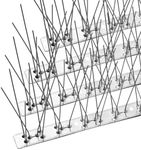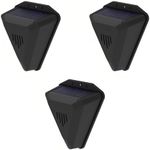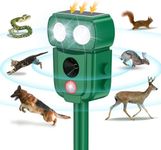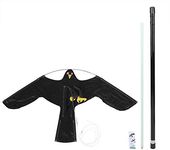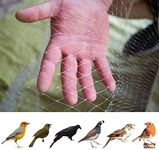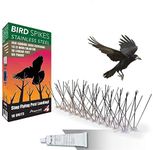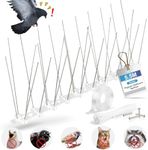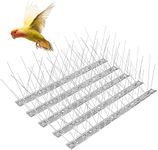Buying Guide for the Best Bird Repellents
Choosing the right bird repellent can make a big difference in protecting your property, garden, or crops from unwanted bird activity. The best approach is to understand the different types of repellents available and match them to your specific needs, such as the area you want to protect, the type of birds causing issues, and whether you prefer a chemical-free solution. By focusing on the key features and understanding how they work, you can select a bird repellent that is both effective and safe for your environment.Type of RepellentBird repellents come in several forms, including visual, auditory, chemical, and physical barriers. Visual repellents use things like reflective tape or decoys to scare birds away, while auditory repellents emit sounds that birds find disturbing. Chemical repellents use substances that birds dislike, and physical barriers include nets or spikes that prevent birds from landing. The type you choose should depend on your situation: for small gardens, visual or auditory options might be enough, while larger areas or persistent birds may require a combination of methods.
Coverage AreaCoverage area refers to how much space a repellent can protect. Some products are designed for small spaces like balconies, while others can cover large fields or rooftops. It's important to match the coverage area of the repellent to the size of the area you want to protect. If you have a small patio, a compact device or a few strips of tape may be sufficient, but for larger properties, look for products that specify a wide coverage or consider using multiple units.
Target Bird SpeciesNot all repellents work equally well on every bird species. Some are designed to deter specific types of birds, such as pigeons, sparrows, or crows, while others are more general. Knowing which birds are causing problems will help you choose a repellent that is proven to be effective against them. If you are unsure, opt for a broad-spectrum repellent that targets a wide range of birds.
Safety and Environmental ImpactSafety is important, especially if you have pets, children, or edible plants nearby. Some chemical repellents may not be suitable for use around food crops or water sources, while others are non-toxic and safe for all environments. Always check the safety information and consider the environmental impact of the product. If you prefer a natural approach, look for repellents that are labeled as eco-friendly or non-toxic.
Ease of Installation and MaintenanceSome bird repellents are simple to set up, like hanging strips or placing decoys, while others, such as netting or electronic devices, may require more effort to install and maintain. Consider how much time and effort you are willing to invest in setting up and maintaining the repellent. If you want a low-maintenance solution, choose something that requires minimal upkeep and is easy to reposition or replace as needed.
Weather Resistance and DurabilitySince most bird repellents are used outdoors, it's important to choose products that can withstand the weather in your area. Look for repellents made from durable materials that are resistant to rain, wind, and sun exposure. If you live in a region with harsh weather, prioritize products that are specifically designed for outdoor use and have good reviews for longevity.
